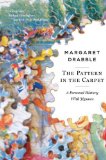Summary | Excerpt | Reviews | Read-Alikes | Genres & Themes | Author Bio

The Marvelous History of Our Alphabet From A to Z
by David SacksA fun, lively, and learned excursion into the alphabet, and into cultural history with twenty-six fact-filled "biographies" of letters A through Z.
In Letter Perfect, David Sacks has embarked on a fun, lively, and learned excursion into the alphabet, and into cultural history. Clearly explaining the letters as symbols of precise sounds of speech, the book begins with the earliest known alphabetic inscriptions (circa 1800 b.c.), recently discovered by archaeologists in Egypt, and traces the history of our alphabet through the ancient Phoenicians, Greeks, and Romans and up through medieval Europe to the present day. However, the heart of the book is the twenty-six fact-filled "biographies" of letters A through Z, each one identifying the letter's particular significance for modern readers, tracing its development from ancient forms, and discussing its noteworthy role in literature and other media. We learn, for example, why letter X may have a sinister and sexual aura, how B came to signify second best, why the word mother in many languages starts with M. Combining facts both odd and essential, Letter Perfect is cultural history at its most accessible and enjoyable.
BookBrowse note: Letter Perfect was originally published in hardcover under the title Language Visible.
The history of our alphabet is, to a greater or lesser extent, also the history of our own culture; in Letter Perfect you'll discover much about both. Sacks starts with a fascinating overview of the history of the various world alphabets (which is perhaps the most compelling part of the book) before breaking off to explore, with much wit and wisdom, the personal histories of each letter in turn. Whether you're reading about 'The Lure of L', 'Primordial M' or 'The Story of O' - you'll find fascinating facts and anecdotes in every chapter; plus many entertaining asides, such as why J arrived late to the alphabet party, why K is the poor relation to C and what Q is doing in there at all; not to mention the sinister reputation of T.

If you liked Letter Perfect, try these:

by Simon Garfield
Published 2012
A hugely entertaining and revealing guide to the history of type that asks, What does your favorite font say about you?

by Margaret Drabble
Published 2010
An original and brilliant work. Margaret Drabble weaves her own story into a history of games, in particular jigsaws, which have offered her and many others relief from melancholy and depression.